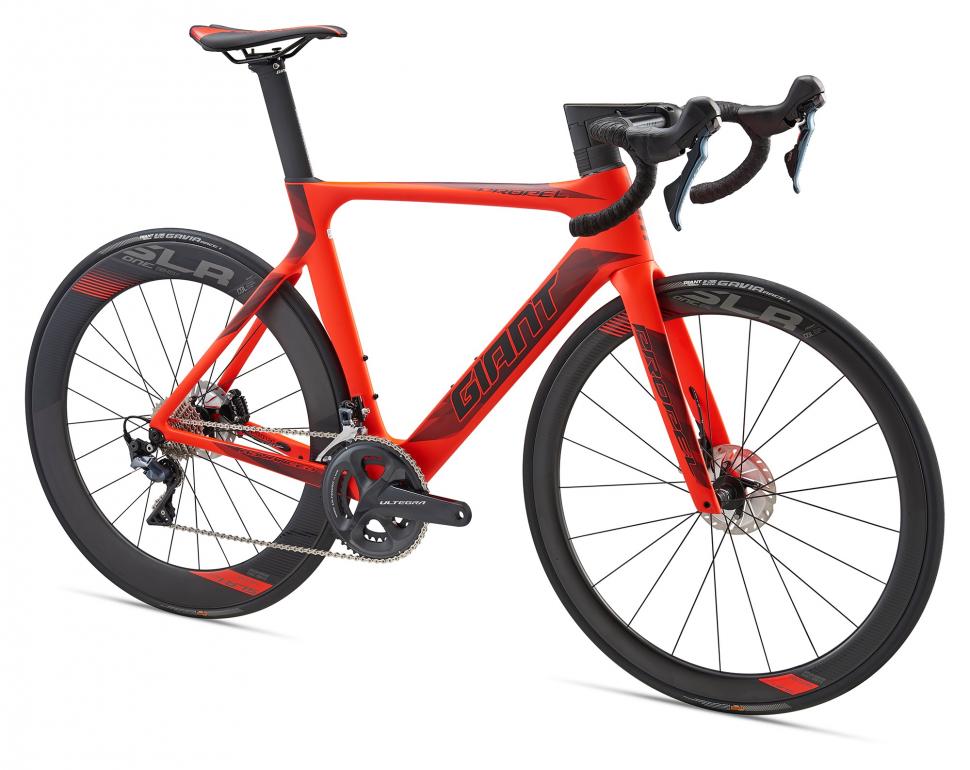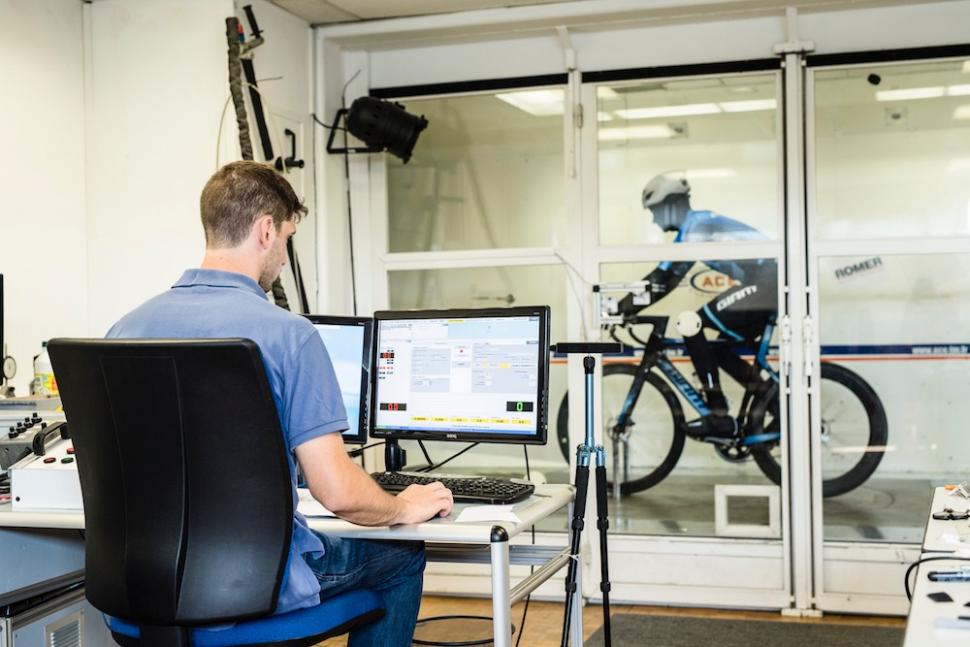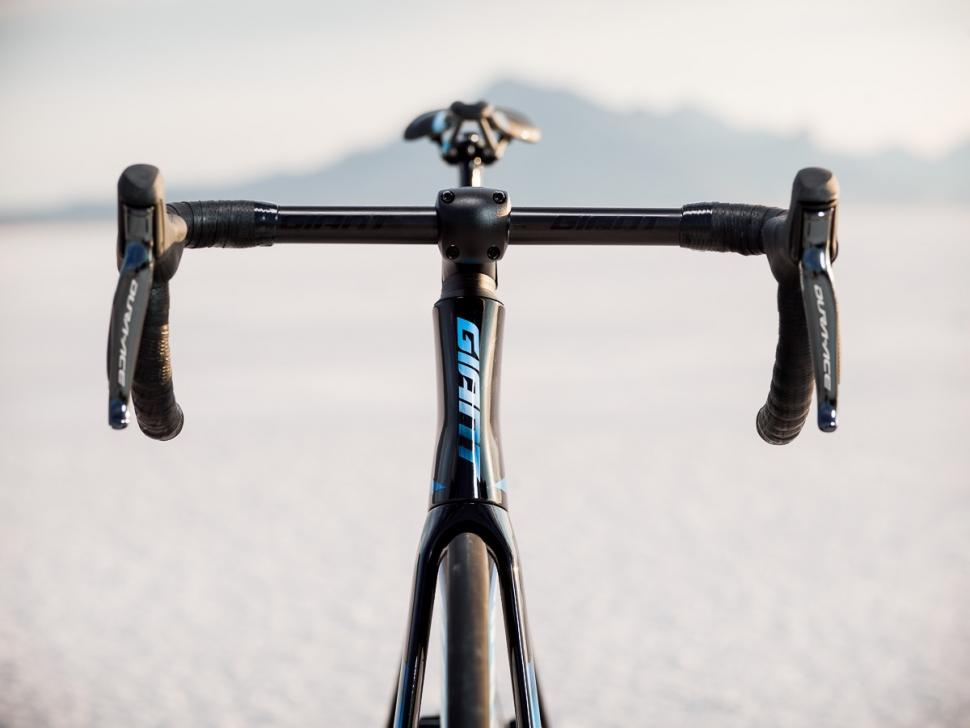- News
- Reviews
- Bikes
- Accessories
- Accessories - misc
- Computer mounts
- Bags
- Bar ends
- Bike bags & cases
- Bottle cages
- Bottles
- Cameras
- Car racks
- Child seats
- Computers
- Glasses
- GPS units
- Helmets
- Lights - front
- Lights - rear
- Lights - sets
- Locks
- Mirrors
- Mudguards
- Racks
- Pumps & CO2 inflators
- Puncture kits
- Reflectives
- Smart watches
- Stands and racks
- Trailers
- Clothing
- Components
- Bar tape & grips
- Bottom brackets
- Brake & gear cables
- Brake & STI levers
- Brake pads & spares
- Brakes
- Cassettes & freewheels
- Chains
- Chainsets & chainrings
- Derailleurs - front
- Derailleurs - rear
- Forks
- Gear levers & shifters
- Groupsets
- Handlebars & extensions
- Headsets
- Hubs
- Inner tubes
- Pedals
- Quick releases & skewers
- Saddles
- Seatposts
- Stems
- Wheels
- Tyres
- Health, fitness and nutrition
- Tools and workshop
- Miscellaneous
- Buyers Guides
- Features
- Forum
- Recommends
- Podcast
TECH NEWS
 Propel Advanced Disc.jpg
Propel Advanced Disc.jpgGiant reveals new Propel Disc aero road bikes
Giant has finally released details of the Propel Disc aero road bikes that we first saw raced in this year’s Tour de France, claiming that the flagship model, the Propel Advanced SL Disc, has the highest stiffness-to-weight ratio of any bike in its class and a lower drag coefficient at a wider range of yaw angles than its non-disc-brake predecessor.
Rim brake versions of the Propel have been in the Giant line-up for years but this is the first time that disc brakes have been added.
Giant says that the Propel Disc had a three year development phase involving its engineers, Team Sunweb pro racers and aerodynamics experts at the Aero Concept Engineering facility in Magny-Cours, France.
“To best simulate actual riding conditions, we created a dynamic mannequin,” says Giant. “This allows us to more accurately replicate real-world riding forces and conditions without the variables that are intrinsic to testing with human riders. Some other brands use a static mannequin, but our dynamic one more accurately reveals the aerodynamic effects of a rider while pedalling.
“We used a 24mph windspeed in a temperature and humidity controlled environment, with yaw angles ranging from 0 to 30 degrees. With the dynamic mannequin, spinning wheels and moving drivetrain, we were able to produce the most real world aerodynamic analysis possible. Our process is an industry first. It helped us sculpt the design of the new Propel Disc range and fine-tune an overall system that considers the aerodynamic forces of rider and bike together.”
The new range features new frame profiles and an integrated disc-brake design, and there’s also a new combined aero handlebar and stem with internal cable routing, and aero wheelsets with different rim depths front and rear, the idea being to reduce drag without compromising control or power transmission.
Read our complete guide to Giant’s 2017 road bikes here.
Giant claims that the Propel Advanced SL Disc has the highest stiffness-to-weight ratio of any bike in its class, and says that wind-tunnel tests reveal the Propel Disc bikes have lower drag coefficients at a wider range of yaw angles than their rim brake predecessors.
“One of the key breakthroughs is a new truncated ellipse airfoil shape – a design that lowers drag at a wider range of wind angles than traditional teardrop frame tubing,” says Giant. “Engineers also found that, with proper integration, a disc-brake design can actually improve aero performance compared to rim-brake configurations.”
That’s a significant claim in that one of the arguments often put forward against disc brakes is that they increase drag.
“This is because the location of traditional callipers (either in front or behind the fork crown/ legs) creates 'dirty' air,” says Giant. “Opening up the fork crown area (by placing the disc-brake callipers down at the hub) means that the air hitting the new disc-brake calliper has already been disrupted by the leading edge of the tyre/wheel. This effect is further enhanced by an asymmetric fork that helps smooth out airflow over the calliper.”
The frame is engineered for Flat Mount disc-brakes and is thru axle front and rear.
Check out our review of the rim brake Giant Propel Advanced 1.
Giant claims that the top level Propel Advanced SL Disc frameset is lighter than the Specialized Venge Disc and Trek Madone. The frame has a claimed weight of 982g and a fork weight of 378g (the corresponding figures for the rim brake Propel Advanced SL are 950g and 380g). Giant also says that the Propel Advanced SL Disc is significantly stiffer than its key rivals.
The Propel Disc range features new component tech including an “integrated Giant WheelSystem” where the rear wheel has a 65mm deep rear rim for aero efficiency and power transmission while the front wheel has a shallower 42mm rim for improved crosswind stability.
“The result is a bike that not only accelerates and slices through wind faster, but also corners with greater precision and handles better in all types of racing situations,” says Giant.
The new Contact SLR/SL Aero combined handlebar/stem was designed with internal cable routing for better aerodynamic efficiency.
Giant says that it could easily have got better aero figures by sacrificing stiffness or light weight but it wanted to keep a large head tube, down tube and bottom bracket area to maintain the bike’s efficiency and handling characteristics.
As usual with Giant, the Propel Disc lineup is divided into three series: Propel Advanced SL Disc, Propel Advanced Pro Disc and Propel Advanced Disc, in descending order or price.
The Propel Advanced SL Disc range, ridden by Team Sunweb, uses Giant’s highest grade Advanced SL composite and Giant says the bikes have the highest stiffness-to-weight ratio in their class. All models in this series feature the Contact SLR Aero handlebar/stem unit. The series also features the new Giant SLR Aero WheelSystem with a 65mm rear rim depth and 42mm front rim. These wheels are matched with Giant’s new Gavia tubeless tyres.
The Propel Advanced Pro Disc bikes are made from Giant’s Advanced-grade composite. This series features Giant’s Tubeless Ready SLR 1 Aero WheelSystem with a 65mm rear rim depth and 42mm front rim. This series also includes the Contact SLR/SL Aero bar and stem.
The Propel Advanced Disc series bikes, also made of Advanced-grade composite, are the least expensive but Giant says that they’re still among the lightest in their category.
For more information, go to www.giant-bicycles.com/PropelDisc
Mat has been in cycling media since 1996, on titles including BikeRadar, Total Bike, Total Mountain Bike, What Mountain Bike and Mountain Biking UK, and he has been editor of 220 Triathlon and Cycling Plus. Mat has been road.cc technical editor for over a decade, testing bikes, fettling the latest kit, and trying out the most up-to-the-minute clothing. He has won his category in Ironman UK 70.3 and finished on the podium in both marathons he has run. Mat is a Cambridge graduate who did a post-grad in magazine journalism, and he is a winner of the Cycling Media Award for Specialist Online Writer. Now over 50, he's riding road and gravel bikes most days for fun and fitness rather than training for competitions.
Latest Comments
- mdavidford 25 min ago
You seem to be rather undermining your own point here, given that LTNs fall squarely into the class of what Chrisona's talking about (modal filters...
- wtjs 26 min 19 sec ago
What do they expect to achieve on one day a week? Not much, which is exactly what they want.
- brooksby 25 min 52 sec ago
https://www.bournemouthecho.co.uk/news/24697990.driveways-blocked-counci...
- wtjs 29 min 51 sec ago
I have been using a Tickr for years, multiple battery changes with no problem at all Same with Polar H10.
- Chris RideFar 10 hours 22 min ago
I know that in independent tests on 10 and 11 speed chains, the SRAM chains always came out bottom in terms of drivetrain efficiency. Lots of...
- quiff 10 hours 28 min ago
The comparison was between two things never intended to be used on a bike.
- chrisonabike 11 hours 46 min ago
Well, send us a review when you've cycled it!...
- Backladder 13 hours 9 min ago
Since the driver used similar language it in not "likely" that he was caused harrasment alarm or distress by having it returned to him. (IANAL)





Add new comment
10 comments
I love the paint job <hides>
I don't know if it's the colour schemes they've chosen, but all these bikes look like plastic toys.
I was really looking forward to see new Propel, but after seeing the spec I must say it is really disappointing. First, the 42/65mm wheelset does not really make much sense for me, as decent U shaped 50mm rims are easy to handle even in heavy crosswinds. Second, I really wanted to see an Ultegra equipped bike with full carbon fork, a disc brake equivalent of Propel Advanced Pro 1. Having said that, I think the only option for this bike is Di2, as the cable radius seems to be rather extreme, but let's wait for some tests to verify this. I really don't mind the stem, actually I think it looks cool, but the color schemes (apart for the blue one) are just terrifying.
The last piece of the puzzle is the price - the cheapest one is still more expansive than Foil 20 and a good pound heavier. I think I'll stay with the Scott.
Winner of pointiest stem ever award goes to.,
FWIW, Euro prices are 3.799,90 € 5.299,90 & 9.999,90 €
Weights (cheapest 1st) are 8.12 /7.57/7.33 kg
So, with usual unfavourable currency rates in the UK these are going to be more expensive and heavier than the Aeroad, hmm.
Agreed, can't see it doing your gonads much good in the event of an off...
Nice bike, could have tempted me away from the Aeroad.... until I saw the price! 10 grand!
Be better if they used a neutral colour scheme. All 3 look so bloody gerish
That stem is UGLY
Something that isn't clear in the article, but which I believe to be the case having read stuff on the Propel elsewhere, is that Giant are no longer going to offer a rim brake version at all.
If correct, that's quite a statement about where things are going regarding brakes on road bikes.
It isn't.